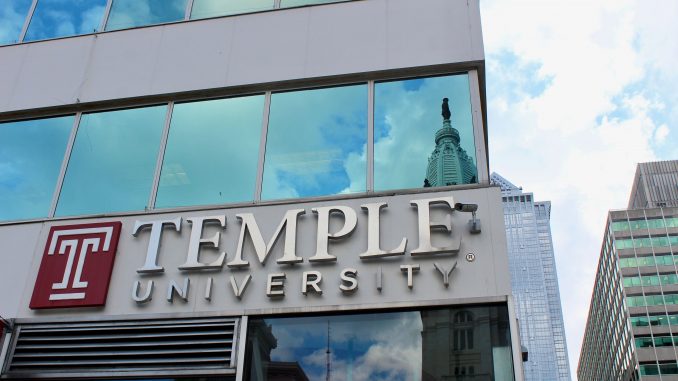
Temple University Center City’s fifth floor was closed the first week of classes because asbestos floor tiles were found during remodeling. Some asbestos tile remains concealed in the rest of the building’s flooring.
Classes scheduled to be held on the fifth floor were relocated to other floors of TUCC because of the poisonous tiles. The university complied with city health in removing the asbestos floor tiling.
Asbestos is a mixture of fibrous minerals resistant to corrosion. It was commonly used throughout the 20th century in materials like roof shingles, pipes and floor tiles. It wasn’t banned in most products until 1989.
Use of asbestos is now more strictly regulated by the Occupational Health and Safety Administration and the Environmental Protection Agency because it has been directly linked to cause lung cancer and mesothelioma, a cancer that affects the lining of the lungs, heart and abdomen.
Staff and faculty with offices and classes on the fifth floor were first notified about their impending relocation due to the asbestos on Aug. 8. Work to remove the asbestos tiles officially began the week before Fall 2017 classes on Aug. 22. Faculty and staff had already been moved prior to this date, because the fifth floor was being repainted.
After the asbestos was discovered, an asbestos remediation firm came in and pulled up the tile and put down a sealant to capture any residual dust and debris, Director of TUCC William Parshall said.
By inserting new vinyl tile and sealing any cracks, the asbestos is now “contained” and has since been further covered with a new layer of carpet, Parshall added.
“There was never any risk to Temple students or staff or employees or faculty because there was that double layer of encapsulation,” Parshall said. “So the whole area is now encapsulated.”
Parshall said some vinyl tile underneath the current carpeting was originally removed along with the carpet by accident, revealing the asbestos tile.
Plans for further re-carpeting have been put on hold, but Parshall said more repairs may be possible in the future if more asbestos tile is found.
“It’s not all over every floor in every place, but it’s my understanding…there was a lot of asbestos tile throughout the building,” Parshall said.
These areas are not dangerous because the asbestos tiles are concealed underneath another layer of tiles, he added.
An asbestos remediation firm came to TUCC the morning after it was discovered and confirmed the presence of asbestos tile. As required by law, TUCC filed a remediation plan and permit application with the City of Philadelphia for removal of the asbestos tile giving the city 10 working days of notice.
Another law required the air to be tested for asbestos levels before, during and after the asbestos tile was fixed, Parshall added.
While the asbestos firm’s post-remediation test levels indicated a negative result for harmful asbestos levels in the air, Parshall said Temple hired a separate, independent company to run the tests a second time as a precaution. Those test results also came back negative.
Parshall added that the type of asbestos found in tile is not as dangerous as people think because it isn’t the type of asbestos that is friable, meaning the fibers don’t get into the air easily.
Asbestos tile would have to be broken to create the dust that could cause the risk of a health hazard, which is why the fifth floor was closed off after the asbestos tiling was found.
“Asbestos doesn’t actually become dangerous until it starts flying,” said journalism professor George Miller, whose class was relocated from the fifth floor to the third. “So I assume we were safe.”
Some areas of TUCC were deemed free of asbestos tiling, like on the sixth floor where only concrete was found underneath the current carpeting with no vinyl or asbestos tiling at all.
Junior financial planning major Alyssa Klauder, who has a managerial accounting class on TUCC’s fifth floor, said her class was held on the third floor of campus during the first week of school. The room change was noted on her course’s syllabus, but no explanation was provided, and she never saw any construction being done.
She added most of her classmates are unaware asbestos tile had been found at TUCC.
“I feel like [Temple] should put something out there like, ‘Hey, just a heads up,’” Klauder said.
All classes have returned to the fifth floor and schedules are back to normal, Parshall added.



Be the first to comment